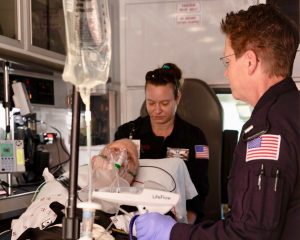
Emergency Medical Services is the first line of defense against septic shock mortality. With approximately 1.7 million adults diagnosed annually and nearly 270,000 deaths each year, septic shock and sepsis continue to be a major public health burden.1
When patients develop sepsis progressing to shock, blood pressure is often decreased. Hypotension and hypovolemia can quickly lead to hypoperfusion of peripheral organs and impaired function. One common symptom of patients with septic shock is confusion. In fact, confusion is often one of the primary reasons the EMS system is activated.
A recent publication details a retrospective study by Jouffroy et al. that was conducted to evaluate the correlation between prehospital blood pressure after hemodynamic resuscitation with crystalloid fluids and 28-day mortality of patients with septic shock.2 Septic shock was defined by the Surviving Sepsis Campaign criteria, including persistent hypotension and MAP<65. Diagnosis of septic shock was confirmed by discharge diagnosis.
Ninety-eight percent of patients (N=85) did receive crystalloids prehospital. Mean fluid volume was 998 ± 578 ml/kg. A significant correlation was seen between 28-day mortality and post-fluid resuscitation blood pressure, specifically mean blood pressure < 65 mmHg. There are many limitations to this study, including size and single center, but the take-away is similar to that of recent, larger studies that showed a relationship between prehospital fluid resuscitation and improved outcomes in septic shock.3,4
The concept of activating EMS and beginning fluid administration in the field mimics the concept of “survival chain” of CPR. EMS can play an impactful role in administering these lifesaving fluids in the first hour once the EMS system is activated, and prior studies have shown mortality can decrease by 9% for each hour saved with treatment. 5 This study was of limited size it but does lead to the conclusion that more studies are needed to determine the effects on mortality and outcome of patients with septic shock who receive fluid resuscitation prehospital, including analyzing the amount of fluids that are given.
Interested in learning more about LifeFlow? Contact us.
- https://www.cdc.gov/sepsis/datareports/index.html Centers for Disease Control and Prevention [Internet]. Atlanta: Department of Health and Human Services. Sepsis: data & reports; 2016 Aug 23 [cited 2019 Sep 10].
- Jouffroy, Romain et al. “Association between Blood Pressure after Haemodynamic Resuscitation in the Prehospital Setting and 28-Day Mortality in Septic Shock.” Turkish Journal of Anaesthesiology and Reanimation 48,3 (2020): 229-234. doi:10.5152/TJAR.2019.45577
- Lane, Daniel J., et al. “Association between early intravenous fluids provided by paramedics and subsequent in-hospital mortality among patients with sepsis.” JAMA network open8 (2018): e185845-e185845.
- Jouffroy R, et al, Fluid resuscitation in pre-hospital management of septic shock, American Journal of Emergency Medicine (2018), https://doi.org/10.1016/j.ajem.2018.01.078
- Liu VX, Fielding-Singh V, Greene JD, Baker JM, Iwashyna TJ, Bhattacharya J, Escobar GJ. The Timing of Early Antibiotics and Hospital Mortality in Sepsis. Am J Respir Crit Care Med. 2017 Oct 1;196(7):856-863. doi: 10.1164/rccm.201609-1848OC. PMID: 28345952; PMCID: PMC5649973.

